Your Japanese knotweed look alikes images are ready in this website. Japanese knotweed look alikes are a topic that is being searched for and liked by netizens today. You can Find and Download the Japanese knotweed look alikes files here. Find and Download all royalty-free images.
If you’re searching for japanese knotweed look alikes images information related to the japanese knotweed look alikes keyword, you have pay a visit to the ideal site. Our site frequently provides you with suggestions for refferencing the maximum quality video and picture content, please kindly surf and find more informative video content and images that match your interests.
Japanese Knotweed Look Alikes. DEDICATION This handbook is dedicated to the late Barbara Cush Bushcare volunteer and conservationist of the endangered Turpentine Ironbark Forest at Carrs Bush-Galston. Virginia cutgrass white grass Leersia virginica Pennsylvania knotweed Polygonum persicaria and some other fine grasses have similar morphology. Topics Covered Background Distribution Identification and Lookalikes Habitat and Impacts Best Management Practices and Control Measures Resources and Reporting Tools. Established this plant defies control with roots that grow as deep as 9 feet and rhizomes horizontal roots that send up shoots that grow out to 60 feet.
 Plants That Look Like Japanese Knotweed From wiseknotweed.com
Plants That Look Like Japanese Knotweed From wiseknotweed.com
Invasive Knotweeds and Native Pokeweed Invasive knotweeds Fallopia spp are commonly confused with the native look-alike pokeweed Phytolacca americana. There are a number of Japanese knotweed look-alikes that often get people unnecessarily worried. Japanese Knotweed in Spring The fastest Japanese knotweed growth is during the spring. Look-alikes giant knotweed Polygonum sachalinense Invasive that grows to over 12 tall Leaves often over 12 long Less showy flowers than Japanese knotweed Bohemian knotweed Polygonum x bohemicum Invasive perennial hybrid between giant and Japanese knotweed No known populations in NJ Leaves oval to heart-shaped. Below are some quick tips for telling these two species apart. It doesnt produce seed in the UK but spreads through rhizomes underground stems.
Japanese knotweed can grow one to two metres high.
Japanese knotweed in wetlands and along stream banks and lake shores unless we act to prevent its spread. Japanese Knotweed Best Management Practices In Ontario Goal of this Webinar To provide land managers with the tools for accurate identification and effective control of Japanese knotweed. The easiest way to tell the two plants apart is by fruits or lack thereof. This plant has similar heart-shaped leaves to knotweed and it also displays a similarly ferocious and invasive growth. We have collated a list of plants below that are often mistaken Japanese knotweed. There are a few native look-alikes that can be found in association with Japanese stiltgrass or on their own.
 Source: wiseknotweed.com
Source: wiseknotweed.com
Below are some quick tips for telling these two species apart. Japanese knotweed in wetlands and along stream banks and lake shores unless we act to prevent its spread. 29 Lythrum salicaria Purple Loosestrife Arrangement. Resembles knotweed shoots in the early spring but do not grow very tall Distinguishing features. One of the most common is bamboo since the stems bear a resemblance to the stems of Japanese knotweed.

It produces white flowers. Rolled New Leaf Young leaves Mature leaf New leaves are dark red and 1 to 4cm long Young leaves are green and rolled up with dark red veins The mature leaves are green and heart-shaped but flattened at the base a bit like a shield and are usually around 12cm long Herbicide Effects on Japanese Knotweed. It has large shield-shaped leaves and creamy white clusters of flowers from June to September. What do Japanese Knotweed Leaves Look Like. Look-alikes giant knotweed Polygonum sachalinense Invasive that grows to over 12 tall Leaves often over 12 long Less showy flowers than Japanese knotweed Bohemian knotweed Polygonum x bohemicum Invasive perennial hybrid between giant and Japanese knotweed No known populations in NJ Leaves oval to heart-shaped.
 Source: propertyroad.co.uk
Source: propertyroad.co.uk
Bamboos retain their leaves all year long while Japanese knotweed loses its leaves in late. If it wasnt for Barbaras keen interest support enthusiasm and persistence this handbook may have never been published. Like knotweed it begins to sprout in early spring and can cover massive amounts of space in a short time. New shoots that emerge are redpurple and can look like asparagus spears. Giant Knotweed was also introduced as an ornamental species and can also be invasive.
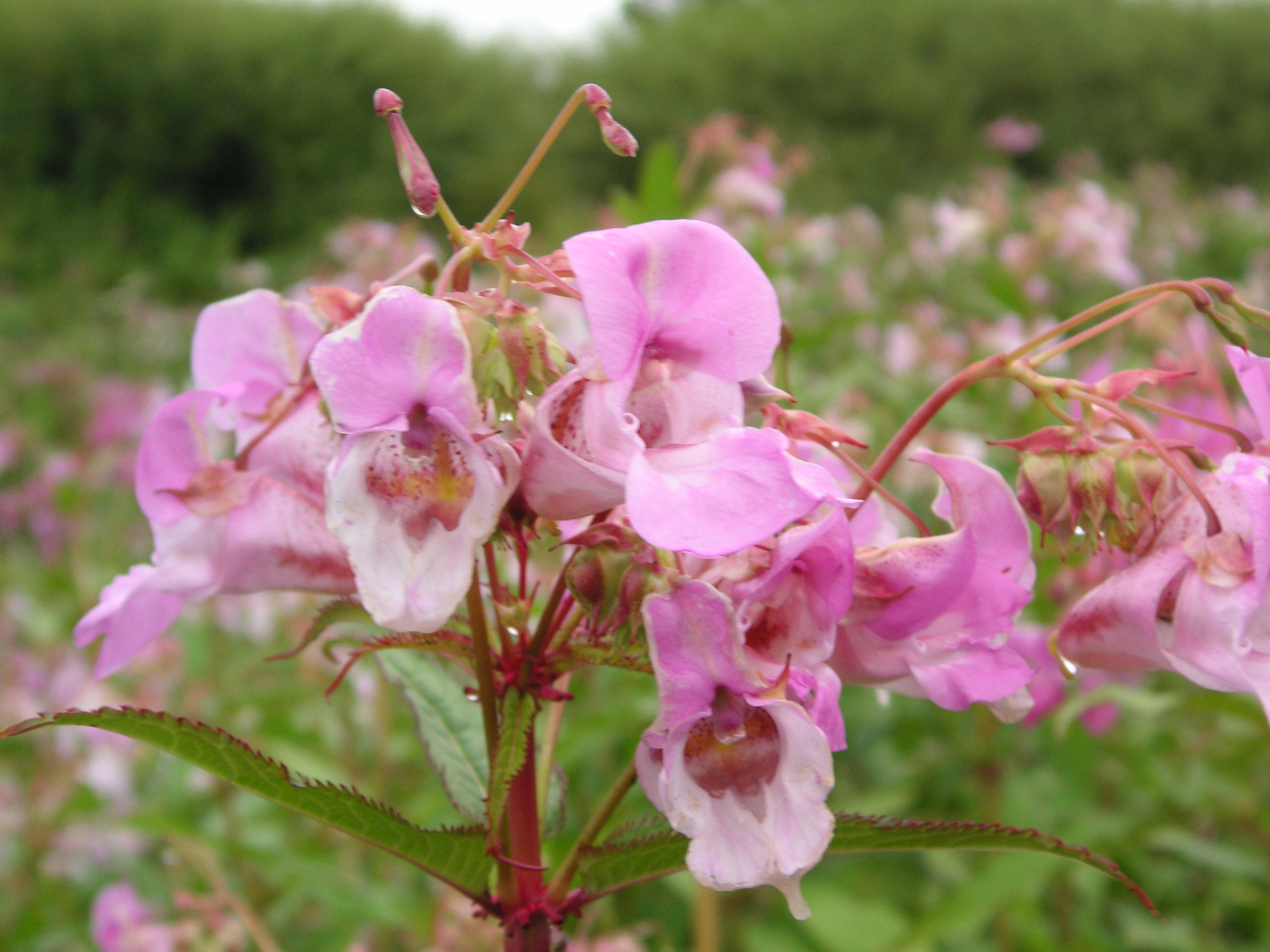 Source: phlorum.com
Source: phlorum.com
It produces white flowers. Resembles knotweed shoots in the early spring but do not grow very tall Distinguishing features. Look-alikes handbook Identification of similar native and weed species. Look-alikes giant knotweed Polygonum sachalinense Invasive that grows to over 12 tall Leaves often over 12 long Less showy flowers than Japanese knotweed Bohemian knotweed Polygonum x bohemicum Invasive perennial hybrid between giant and Japanese knotweed No known populations in NJ Leaves oval to heart-shaped. In late spring canes can reach up to 3 metres 10 feet high.
 Source: knotweedsupport.co.uk
Source: knotweedsupport.co.uk
Established this plant defies control with roots that grow as deep as 9 feet and rhizomes horizontal roots that send up shoots that grow out to 60 feet. Japanese Knotweed in Spring The fastest Japanese knotweed growth is during the spring. This plant has similar heart-shaped leaves to knotweed and it also displays a similarly ferocious and invasive growth. In late spring canes can reach up to 3 metres 10 feet high. The Japanese Knotweed has hollow stems and raised nodes which gives it the bamboo resemblance.
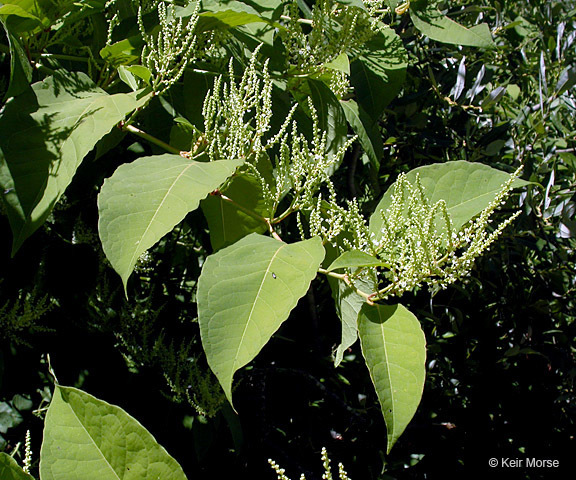 Source: inaturalist.org
Source: inaturalist.org
The leaves are normally rolled up and dark green or red in colour. DEDICATION This handbook is dedicated to the late Barbara Cush Bushcare volunteer and conservationist of the endangered Turpentine Ironbark Forest at Carrs Bush-Galston. Leeds County Ottawa-Carleton and in the Niagara Region. It doesnt produce seed in the UK but spreads through rhizomes underground stems. New shoots that emerge are redpurple and can look like asparagus spears.
 Source: fallsgarden.com
Source: fallsgarden.com
It often develops into dense thickets. Look-alikes giant knotweed Polygonum sachalinense Invasive that grows to over 12 tall Leaves often over 12 long Less showy flowers than Japanese knotweed Bohemian knotweed Polygonum x bohemicum Invasive perennial hybrid between giant and Japanese knotweed No known populations in NJ Leaves oval to heart-shaped. The easiest way to tell the two plants apart is by fruits or lack thereof. Japanese knotweed can grow one to two metres high. Topics Covered Background Distribution Identification and Lookalikes Habitat and Impacts Best Management Practices and Control Measures Resources and Reporting Tools.
 Source: youtube.com
Source: youtube.com
Prevention and Control Japanese knotweed is an extremely difficult plant to control due to its ability to re-grow from vegetative pieces and from seeds. Like knotweed it begins to sprout in early spring and can cover massive amounts of space in a short time. The Japanese Knotweed has hollow stems and raised nodes which gives it the bamboo resemblance. There are a number of Japanese knotweed look-alikes that often get people unnecessarily worried. Below are some quick tips for telling these two species apart.
 Source: habitatmatters.org
Source: habitatmatters.org
Look-alikes Japanese knotweed Polygonum cuspidatum Invasive perennial Leaves oval and occasionally heart-shaped 3 - 6 long and 2 - 5 wide Showier flower clusters than giant knotweed Prefers moist areas Bohemian knotweed Polygonum x bohemicum Invasive perennial hybrid between giant and Japanese knotweed. Invasive Knotweeds and Native Pokeweed Invasive knotweeds Fallopia spp are commonly confused with the native look-alike pokeweed Phytolacca americana. We have collated a list of plants below that are often mistaken Japanese knotweed. Bamboos retain their leaves all year long while Japanese knotweed loses its leaves in late. Bush like growth resembling a horsetail Height.
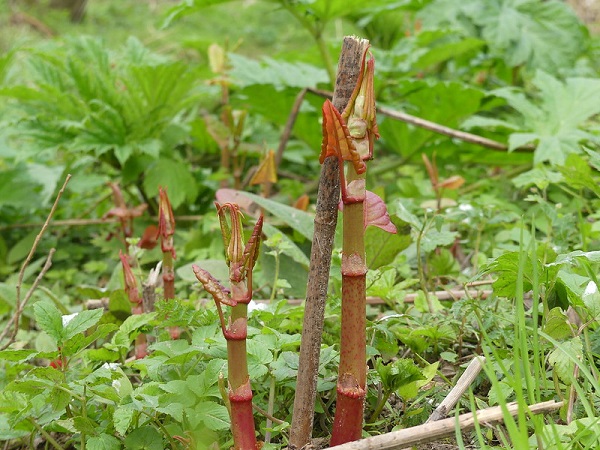 Source: taylor-weed-control.co.uk
Source: taylor-weed-control.co.uk
Japanese Knotweed Look-alikes Giant Knotweed Fallopia sachalinensis. Knotweeds v Pokeweed Look-alikes. Rolled New Leaf Young leaves Mature leaf New leaves are dark red and 1 to 4cm long Young leaves are green and rolled up with dark red veins The mature leaves are green and heart-shaped but flattened at the base a bit like a shield and are usually around 12cm long Herbicide Effects on Japanese Knotweed. Japanese knotweed in wetlands and along stream banks and lake shores unless we act to prevent its spread. Topics Covered Background Distribution Identification and Lookalikes Habitat and Impacts Best Management Practices and Control Measures Resources and Reporting Tools.
 Source: environetuk.com
Source: environetuk.com
Giant knotweed can grow two to four metres high. The Japanese Knotweed has hollow stems and raised nodes which gives it the bamboo resemblance. DEDICATION This handbook is dedicated to the late Barbara Cush Bushcare volunteer and conservationist of the endangered Turpentine Ironbark Forest at Carrs Bush-Galston. Established this plant defies control with roots that grow as deep as 9 feet and rhizomes horizontal roots that send up shoots that grow out to 60 feet. Resembles knotweed shoots in the early spring but do not grow very tall Distinguishing features.
 Source: habitatmatters.org
Source: habitatmatters.org
Japanese knotweed is a tall 2-3m plant with bamboo like stems. The Japanese knotweed hybrid is a hybrid between. 302 Total Lakes and Rivers. Spade shaped leaf Red speckled stem Zig zag formation Creamy-white flowers in summer Be aware of bonsai regrowth which often occurs after glyphosate based herbicides are applied. Look-alikes giant knotweed Polygonum sachalinense Invasive that grows to over 12 tall Leaves often over 12 long Less showy flowers than Japanese knotweed Bohemian knotweed Polygonum x bohemicum Invasive perennial hybrid between giant and Japanese knotweed No known populations in NJ Leaves oval to heart-shaped.
 Source: wiseknotweed.com
Source: wiseknotweed.com
In late spring canes can reach up to 3 metres 10 feet high. They may look the same but there is an easy way to tell the difference between the species. DEDICATION This handbook is dedicated to the late Barbara Cush Bushcare volunteer and conservationist of the endangered Turpentine Ironbark Forest at Carrs Bush-Galston. Invasive Knotweeds and Native Pokeweed Invasive knotweeds Fallopia spp are commonly confused with the native look-alike pokeweed Phytolacca americana. Japanese Knotweed Look-alikes Distinguishing features.
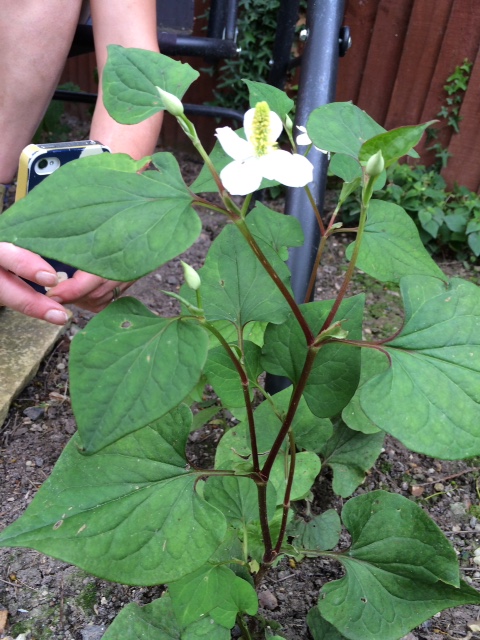 Source: phlorum.com
Source: phlorum.com
Giant Knotweed was also introduced as an ornamental species and can also be invasive. Look-alikes Japanese knotweed Polygonum cuspidatum Invasive perennial Leaves oval and occasionally heart-shaped 3 - 6 long and 2 - 5 wide Showier flower clusters than giant knotweed Prefers moist areas Bohemian knotweed Polygonum x bohemicum Invasive perennial hybrid between giant and Japanese knotweed. Long and slender Stems. Japanese knotweed has leaves that are of a different shape from bamboo leaves. Its stems can also grow as tall as 10ft to 13 ft with broad oval leaves.
 Source: wiseknotweed.com
Source: wiseknotweed.com
Like knotweed it begins to sprout in early spring and can cover massive amounts of space in a short time. Japanese Knotweed Look-alikes Distinguishing features. Topics Covered Background Distribution Identification and Lookalikes Habitat and Impacts Best Management Practices and Control Measures Resources and Reporting Tools. Leeds County Ottawa-Carleton and in the Niagara Region. Japanese knotweed is a tall 2-3m plant with bamboo like stems.
 Source: knotweedsupport.co.uk
Source: knotweedsupport.co.uk
DEDICATION This handbook is dedicated to the late Barbara Cush Bushcare volunteer and conservationist of the endangered Turpentine Ironbark Forest at Carrs Bush-Galston. The Japanese knotweed hybrid is a hybrid between. What do Japanese Knotweed Leaves Look Like. Native to northern Japan it has been found in southern Ontario mostly in the southeast ie. Spade shaped leaf Red speckled stem Zig zag formation Creamy-white flowers in summer Be aware of bonsai regrowth which often occurs after glyphosate based herbicides are applied.
 Source: wmswcd.org
Source: wmswcd.org
We have collated a list of plants below that are often mistaken Japanese knotweed. Look-alikes handbook Identification of similar native and weed species. It produces white flowers. Invasive Knotweeds and Native Pokeweed Invasive knotweeds Fallopia spp are commonly confused with the native look-alike pokeweed Phytolacca americana. What does Japanese knotweed look like.
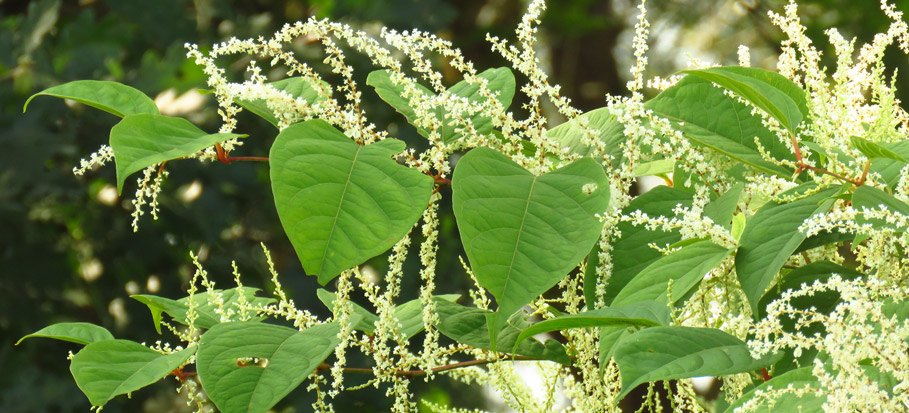 Source: blog.fantasticgardeners.co.uk
Source: blog.fantasticgardeners.co.uk
One of the most common is bamboo since the stems bear a resemblance to the stems of Japanese knotweed. Japanese knotweed can grow one to two metres high. Japanese knotweed has leaves that are of a different shape from bamboo leaves. It doesnt produce seed in the UK but spreads through rhizomes underground stems. The leaves are normally rolled up and dark green or red in colour.
This site is an open community for users to do sharing their favorite wallpapers on the internet, all images or pictures in this website are for personal wallpaper use only, it is stricly prohibited to use this wallpaper for commercial purposes, if you are the author and find this image is shared without your permission, please kindly raise a DMCA report to Us.
If you find this site helpful, please support us by sharing this posts to your preference social media accounts like Facebook, Instagram and so on or you can also bookmark this blog page with the title japanese knotweed look alikes by using Ctrl + D for devices a laptop with a Windows operating system or Command + D for laptops with an Apple operating system. If you use a smartphone, you can also use the drawer menu of the browser you are using. Whether it’s a Windows, Mac, iOS or Android operating system, you will still be able to bookmark this website.






